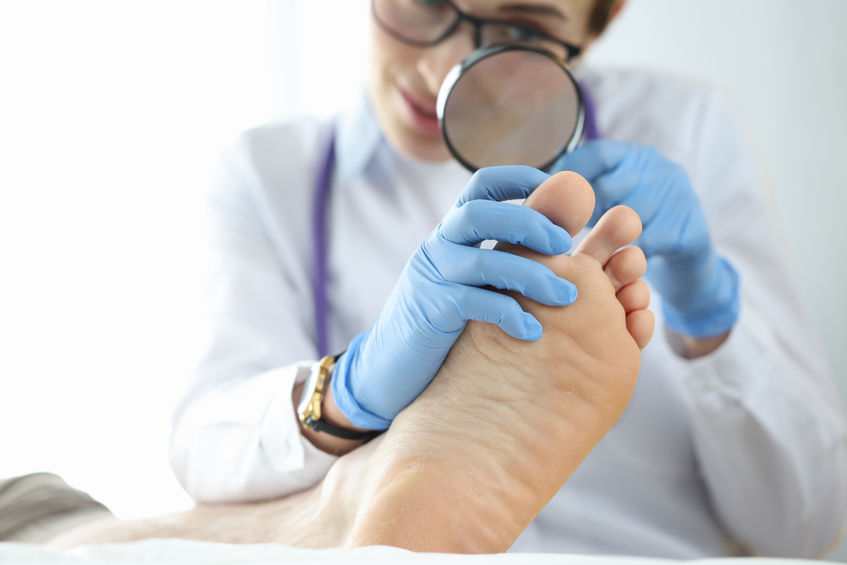Onychomycosis is the medical word for a chronic fungal infection of the toenails or fingernails. Toenail fungus most often occurs in adults, but also can occur in children.
Signs and symptoms of nail fungus
- Nail discoloration
- Extra skin cells growing between the nail and nail bed or thickening and lifting off the nail (called subungual hyperkeratosis)
- Splitting or destruction of the nail plate
Nail fungus can worsen and become painful, spread to other body sites, and in people with weakened immune systems, could become a skin infection. People can get toenail fungal infections from direct contact of the nail with mold or yeast that cause infection. These fungi can come from infected skin or the environment.
What puts someone at increased risk for nail fungus?
- If the nail is already injured or diseased
- Chronic diseases like diabetes, weakened immune systems, cancer, obesity, or blood flow disorders
- Certain environmental factors like poor nail grooming, sports and fitness activities, smoking, and wearing closed in shoes without much airflow
Oral treatments & medication for nail fungus
There are both oral and topical treatments available for onychomycosis. A combination of both oral and topical treatments may be recommended and possibly more effective. During treatment, avoid pedicures, nail polish, or cosmetic nail products.
Oral Medication (prescription only):
- Terbinafine can be used for mild to severe onychomycosis and is usually the first-choice medicine.
- Terbinafine is taken by mouth daily usually for 6 weeks (fingernails) or 12 weeks (toenails)
- Terbinafine may interact with certain drugs, so make sure your doctor knows all the medicines you take regularly
- Side effects may include headache, stomach upset, taste disturbances, changes to liver function tests, and rarely a severe skin condition called Stevens-Johnson syndrome has occurred with terbinafine treatment
- Itraconazole can be used if someone does not tolerate terbinafine or doesn’t have a good response with terbinafine. It is usually more expensive than terbinafine.
- Itraconazole is taken by mouth either daily for 6-12 weeks or twice daily for one week a month for 2-3 months depending on the dosing regimen your doctor chooses
- Itraconazole may interact with certain drugs, so make sure your doctor knows all the medicines you take regularly
- Itraconazole should not be used in people with certain heart conditions, like congestive heart failure
- Potential side effects of itraconazole include headache, stomach upset, or changes to liver function tests
References:
1) Goldstein, A.O., Bhatia, N. (2019). Onychomycosis: Epidemiology, clinical features, and diagnosis. In R.P. Dellavalle, M.L. Levy, & T. Rosen (Eds), UpToDate. Available from Onychomycosis: Epidemiology, clinical features, and diagnosis – UpToDate
2) Goldstein, A.O., Bhatia, N. (2019). Onychomycosis: Mangement. In R.P. Dellavalle, M.L. Levy, & T. Rosen (Eds), UpToDate. Available from Onychomycosis: Management – UpToDate.












